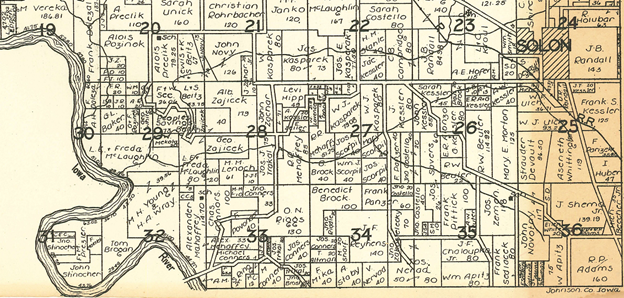By Catherine Hodge
Since plat maps can be used to trace property ownership over time, they are often sought out by genealogists or people interested in family histories, as well as by historians.
What’s in this collection?
The Hixson Plat Map Atlases of Iowa digital collection contains the 1930 editions of Hixson plat books for 95 of Iowa’s 99 counties. Plat books are atlases showing rural land ownership and property boundaries, or real property. A plat atlas generally has a map of the featured county showing the townships and sections as laid out by surveyors. Each page of the atlas is plat of the individual townships (36 square miles) within the county, identifying who owns individual parcels of land and the number of acres in each parcel. The plat shows township sections, roads, railroads, boundaries of towns and urban areas, and bodies of water. Local schools, churches and cemeteries are also noted on each map.Since plat maps can be used to trace property ownership over time, they are often sought out by genealogists or people interested in family histories, as well as by historians.
What BTAA Library submitted the collection?
The University of IowaInteresting tidbits
Another name for plat maps is cadastral maps.
 |
Southeast corner of the plat map of Big Grove Township, Johnson County, Iowa, from the Hixson Plat Book of Johnson County Iowa, 1930.
Where can I find out more?A related collection of plat maps is the Iowa Counties Historic Atlases digital collection. Dating to the mid-1800s, the collection consists of over 200 atlases of Iowa counties containing plat maps, county histories, illustrations of buildings, farms and farm animals, and featuring portraits of prominent individuals. Have questions about this collection, the BTAA geoportal, or maps and geospatial data in general? Please don’t hesitate to contact our project team! Catherine Hodge is the Monographs & Cartographic Resources Cataloging Librarian at the University of Iowa. |